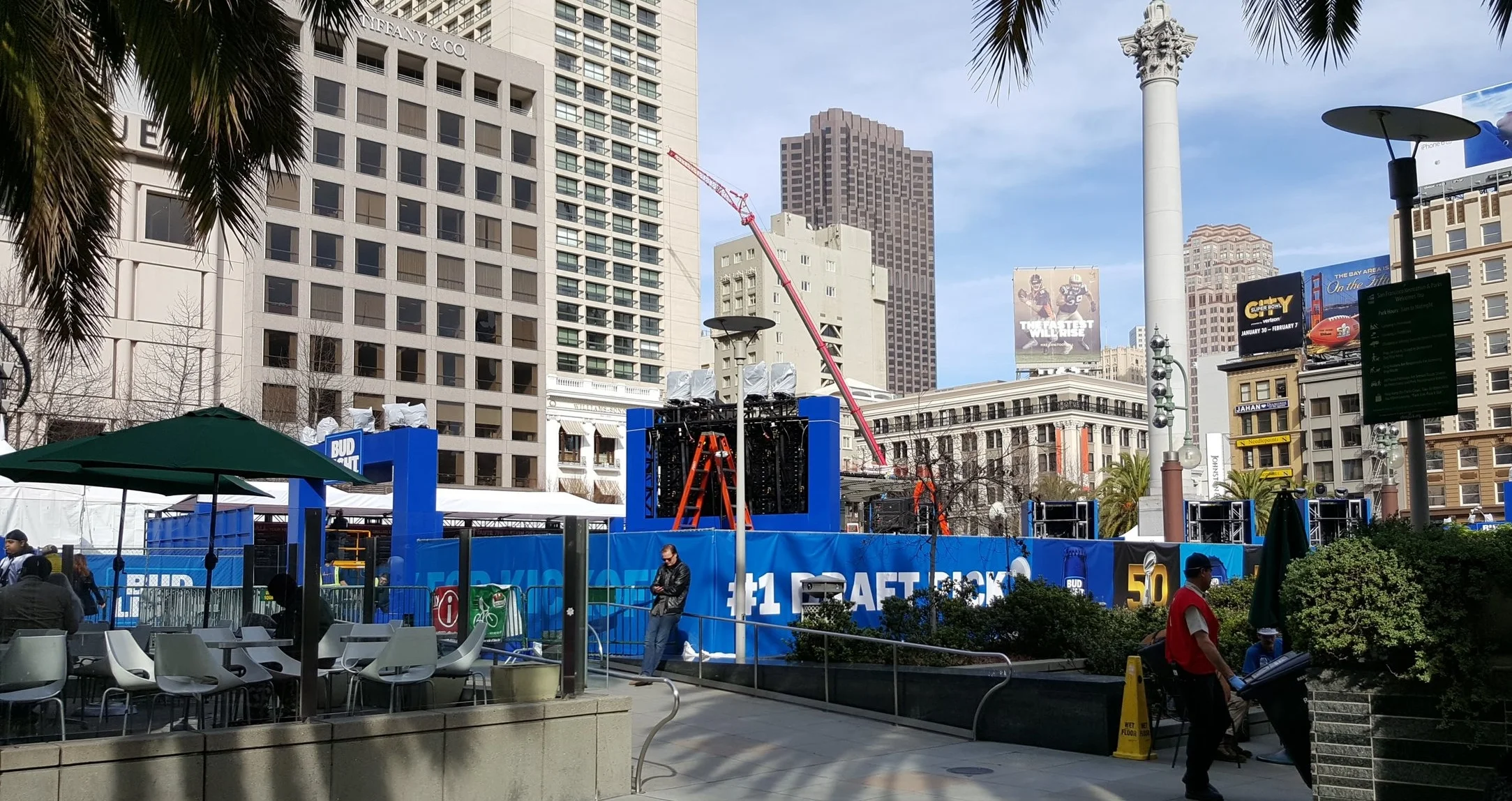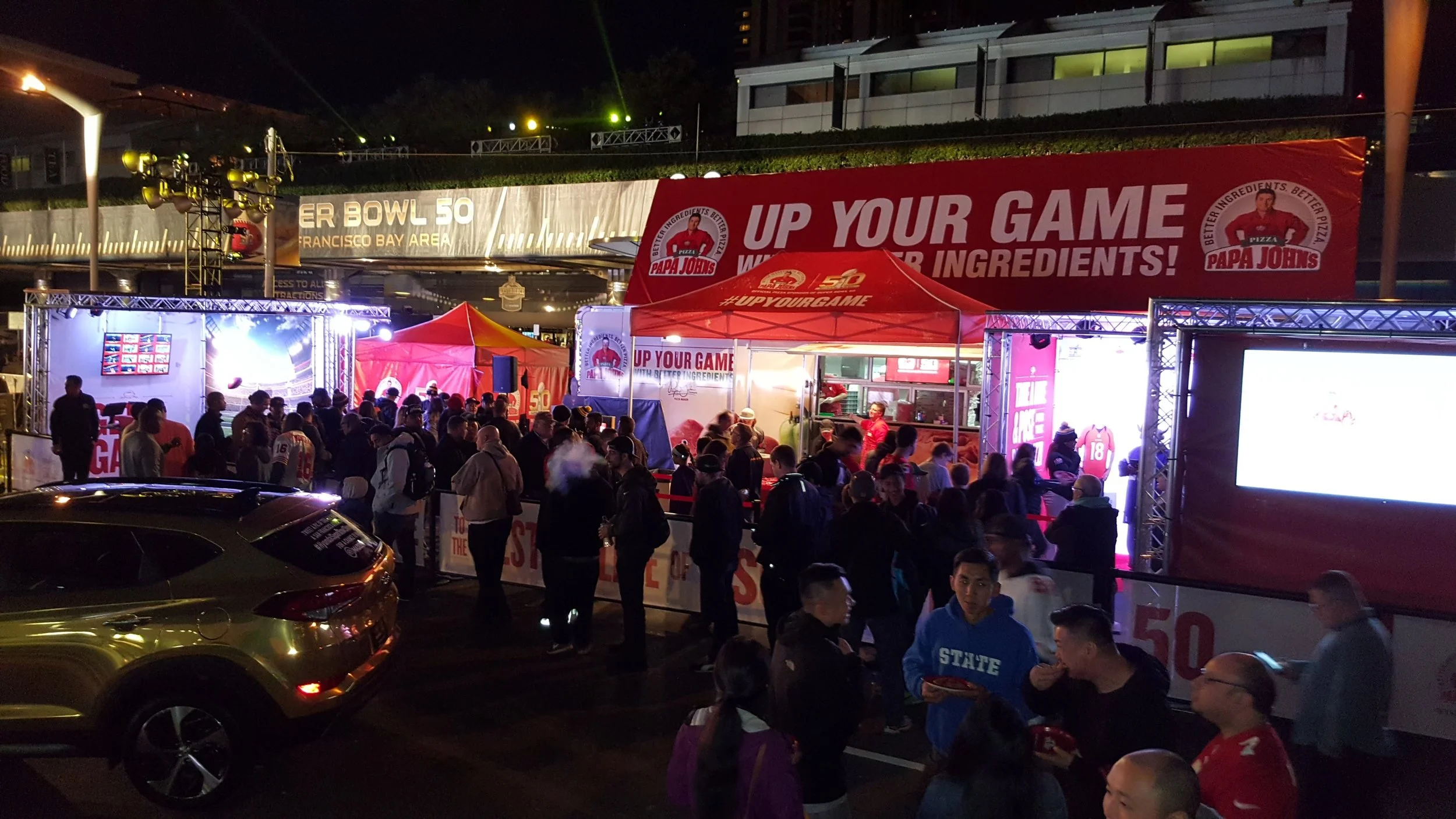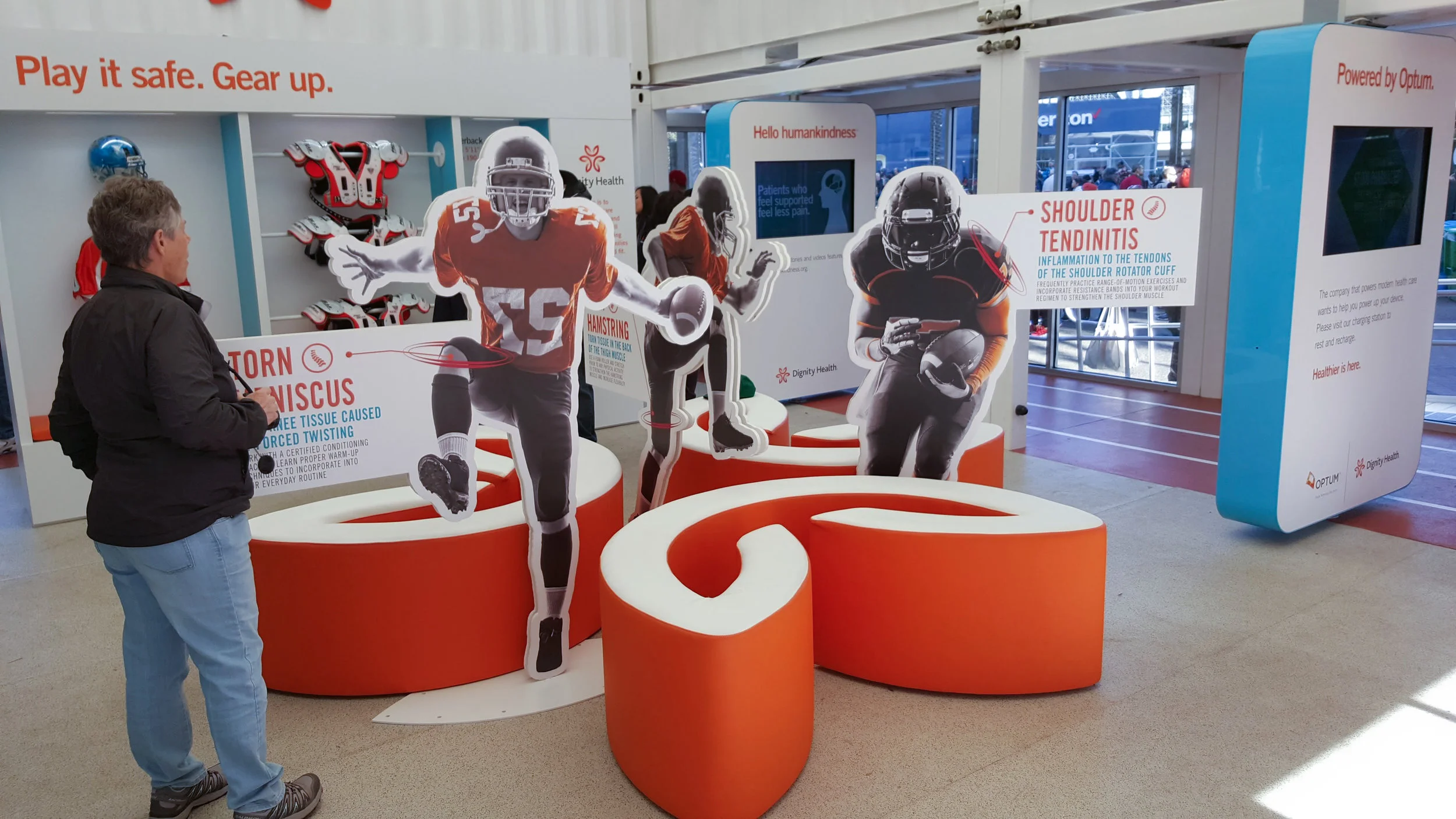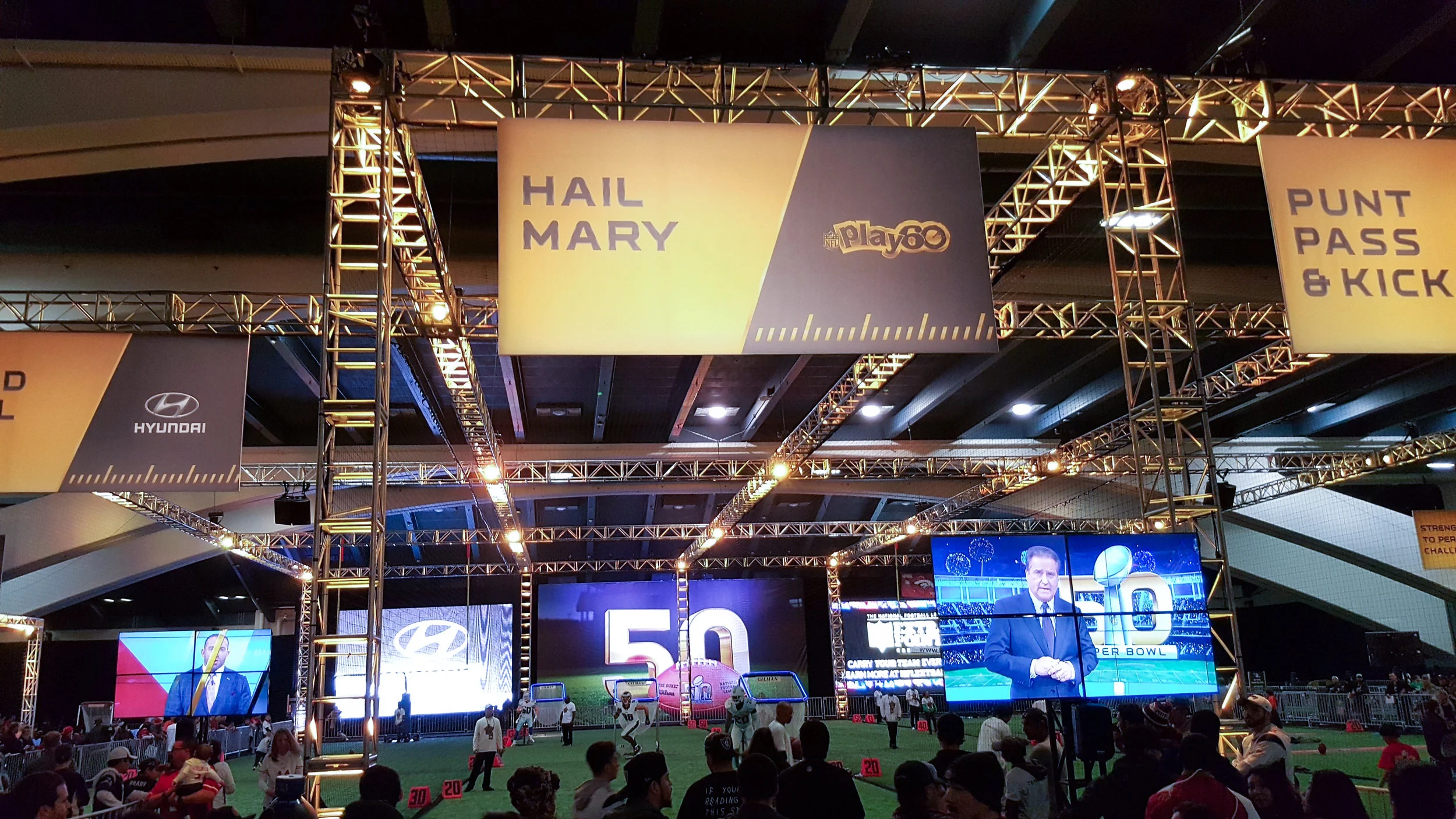BEST PRACTICES IN EXPERIENTIAL DESIGN
Stephen Wilson
I was sent to Super Bowl 50 to do a competitive analysis. I was in charge of bringing back the best ideas from Fan Village, NFLX and the Media Gallery; as well as witness our activations in the real world. This would be the biggest collection of experiential activations I’d ever seen.
At first, I was taken aback. As a designer, I initially preferred to think of things contained neatly in a template — existing within pristine white adobe art boards. At the Super Bowl, there were people, trucks, trussing, banners, screens, cardboard and stuff everywhere. All of this, thrown in dimly lit ballrooms, on top of wild carpets, where branded assets jockeyed for attendees' attention. It was a monstrosity.
After my head stopped spinning, I decided there was one more thing I must do while I was there. I needed to study this great particle collider of brands. I was inspired to learn how to create bulletproof experiential design that would survive in any environment. Here is what I came up with.
USE THE BRAND COLORS
Full bleed images look great on gallery walls, but public spaces are visually chaotic environments. Using a brand's bold colors can push a signal through the noise.
CARVE OUT THE SPACE
It’s easy to forget that an activation can be jammed in-between two or more others. Using physical structures like walls, flooring and barricades help to quarantine attendees’ attention.
AIM HIGH
Events are busy places, crowds will block the view of anything under six feet tall. Using things like marquees or flag banners push a brand high in the air so that it can be seen from far away.
USE LIGHT
Everything can be perfect, but if an activation is stuck in a dark corner and adequate lighting is not installed, no-one will pay attention to it.
THINK IN 3D
Using 3D type, sculptures, or dioramas wins the battle of short attention spans. 3D objects have a greater presence than flat prints.
SIMPLIFY THE OFFERING
Too many choices can overwhelm passers-by and cause them to ignore an activation. Also, having one big idea is better than a collection of inferior ones.
USE CALL-OUTS
The time people spend looking at and understanding the environment around them is measured in seconds. Make sure the attendees can understand what the offering is by using call-outs.






















